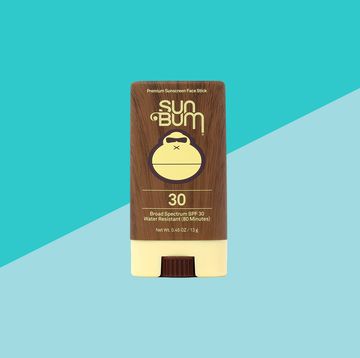Want great hair? Quit focusing on your styling products—the solution may be a little closer to the root.
"Hair follicles need natural oils from the glands that surround them to function," says Robert Dorin, DO, a hair restoration surgeon at True & Dorin Medical Group in New York City. "If you have a dry, irritated, or unhealthy scalp, the hair your follicles produced will likely be drier and less manageable, too," he says.
To keep your scalp in top shape, follow these 7 steps—then sit back and watch your mane grow stronger and shinier by the day. (For more valuable beauty tips, get a free trial of Prevention + 12 FREE gifts!)
1. Brush your hair daily.
"Gently brushing your hair [and scalp] before you hop in the shower removes dead skin cells that can clog hair follicles and inhibit new hair growth," says Eva Scrivo, founder of the eponymous salon in New York City. It also stimulates circulation and brings excess oil down the hair shaft to moisturize ends. (Find the best brush to use for your hair type here.) You'll need to invest in a natural bristle brush (vegetable or boar), though; plastic bristle brushes can't grab the oil and redistribute it through hair, says Scrivo. Try Wigo Cushion 100% Boar Bristle Brush ($24, ulta.com). [block:bean=sub-offer-realtips-flexblock]
2. Wash your hair with a gentle shampoo every 2 to 3 days.
Wash more often than that and you'll strip away the scalp's natural oils, which condition the hair follicle and strands, says Dorin. Wait longer than that (say, 5 days to preserve a blowout) and the buildup of dead skin cells, oil, and hair product can cause inflammation and slow the hair's growth cycle, says Elizabeth Cunnane Phillips, a trichologist at Philip Kingsley Trichological Clinic in New York City. If you're prone to greasy roots, the pros say a daily cleanse is OK—as long as you use a gentle, sulfate-free formula (free of harsh ingredients such as detergent sodium lauryl sulfate, preservative sodium chloride, and thickening agent polyethylene glycol) so it won't dry out your scalp. We like Bumble and Bumble Hairdresser's Invisible Oil Shampoo ($31, bumbleandbumble.com), which is free of all three.
MORE: Why You Can Totally Blame Your Shampoo For Your Bad Hair Days
3. Condition up top every time you wash.
Contrary to what you've heard, putting conditioner on your scalp can actually improve your hair's looks, particularly if your scalp is on the dry side. "Conditioner does for the scalp what moisturizer does for our face after makeup removal; it replaces the moisture that was removed during the cleansing process," says Scrivo. Look for one with moisturizing plant oils or ceramides, waxy lipids that mimic the naturally occurring lipids in your scalp. Try the ceramide-rich L'Oréal Paris Total Repair 5 Restoring Conditioner ($5, drugstore.com). If you have fine hair, never fear: Rinsing well after the fact will keep your roots from drying limp.
MORE: The Top 4 Haircuts That Take Off 10 Years
4. Treat your scalp with essential oils 2 to 3 nights a week.
To maximize healthy hair growth, Scrivo recommends circulation-stimulating rosemary essential oil, while antiseptic lavender and tree tea essential oils help battle fungal dandruff. Simply add a few drops of the essential oil you choose to a seed or vegetable oil, like quick-absorbing jojoba oil or emollient neem oil. Massage onto your scalp before bed for 2 to 3 minutes, and wash it out during your morning shower, says Scrivo. Natural oils absorb easily into the scalp and hair, Scrivo says, so you don't have to worry about ruining your pillowcase, though you can cover it with a towel if you're concerned.
5. Use a clarifying shampoo monthly.
Styling products that stiffen hair, such as hair spray and hair gel, can create a coating on your scalp daily shampoos can't effectively cut through. "That product buildup can irritate the skin, setting off a cascade of immune responses that can slow hair growth and even incite shedding," says Dorin. Once a month, use a clarifying shampoo that contains citric acid, which strips away any residue left on your hair and scalp. Buy an option like Klorane Shampoo with Citrus Pulp ($20, kloraneusa.com) or make your own by adding one or two tablespoons of apple cider vinegar to your regular shampoo, says Scrivo. (Here are 9 more ways to use vinegar for prettier hair and skin.) Let it sit on your scalp for 3 minutes before rinsing, then shampoo and condition as usual. If you dye your hair, take note: "Clarifying treatments will remove color, so it's best to use one right before your next appointment," says Scrivo.
6. Exfoliate monthly.
Like the skin on your face and body, the skin on your scalp will benefit from regular exfoliation, especially if you don't wash very frequently or use a lot of product. "An exfoliating scalp mask will thoroughly cleanse the scalp and lift any unwanted build-up and scale," says Cunnane Phillips. They usually contain tiny granules such as ground apricot seeds (you'll have to rinse well to get rid of all the grit), while others contain dead skin-dissolving acids such as salicylic acid, like the Philip Kinglsey Exfoliating Scalp Mask ($30, philipkingsley.com). Or whip up Dorin's DIY scalp scrub: Combine a few drops of peppermint oil (which helps to increase blood flow), a few tablespoons of olive oil (for moisture), and couple of tablespoons of either ground-up almonds, brown sugar, or cornmeal. Whatever you choose, massage the mix on your scalp with circular motions for 3 minutes and shampoo clean. (Try one of these DIY hair masks for hair that just won't cooperate.)
7. Don't dismiss flakes, ever.
An itchy, flaking scalp isn't just irritating or embarrassing; it's a sign your scalp is in distress. "Hormonal fluctuations, elevated stress, poor nutritional intake, and not cleansing enough all contribute to dandruff, a fungal infection on the skin," says Cunnane Phillips. Why it's a big deal: The inflammation and scratching from severe dandruff can weaken the hair follicle and cause strands to shed prematurely. If you notice itchiness or flakes, wash hair twice a week with an anti-dandruff shampoo and alternate with your regular hair cleanser on other days, recommends Dorin. Choose a formula with 1% zinc pyrithione, like Head & Shoulders Damage Rescue Shampoo ($5, headandshoulders.com). The anti-fungal ingredient helps regulate overzealous oil production, which is what the dandruff-causing fungus feeds on, according to a recent study in the International Journal of Cosmetic Science.














